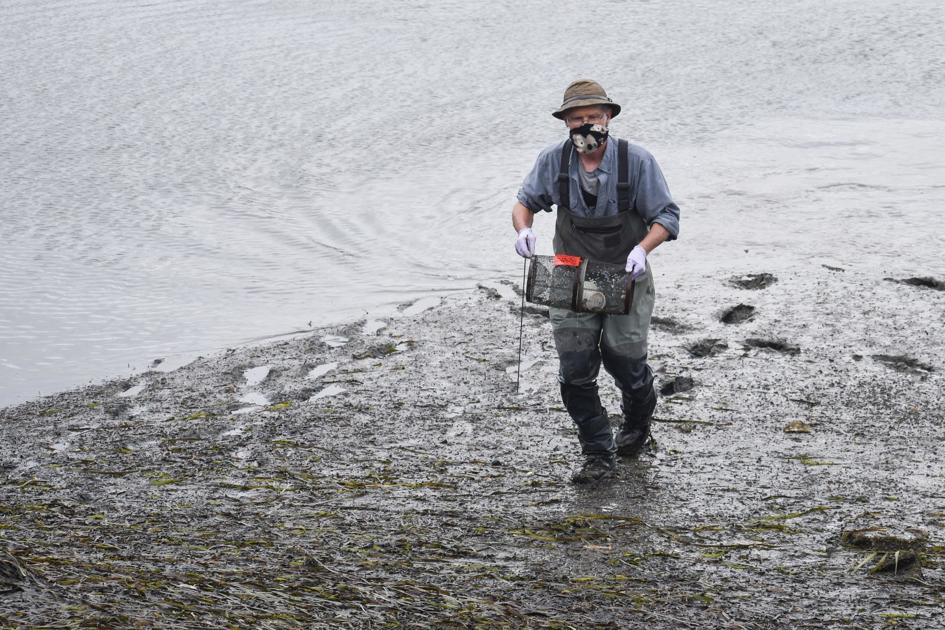
Staff at the Padilla Bay National Estuarine Research Reserve are ramping up shoreline trapping efforts for the invasive European green crab.
“This is intensive monitoring,” Natural Resources Stewardship and Restoration Coordinator Roger Fuller said Wednesday as he and reserve scientists Nicole Burnett and Suzanne Shull set out to collect dozens of traps from Padilla Bay — from Joe Leary Slough north to the Samish River.
The reserve is on heightened alert after the discovery in mid-August of a single green crab in Padilla Bay and the retrieval over the summer of dozens from neighboring Samish Bay.
Fuller said while the reserve regularly sets traps at five sites each month as a precaution against a green crab invasion, it is now setting more — and on a more frequent basis.
Combined with the efforts of the state Department of Fish & Wildlife and Washington Sea Grant’s Crab Team, as many as 170 traps are being utilized throughout Padilla and Samish bays.
One more green crab was found in the traps retrieved from Padilla Bay Wednesday, near the site where the other lone crab was found in August.*
None were found that day in Samish Bay, "which is great news and surprises me," Fuller said
Most of what has turned up in the traps are native hairy shore crabs.
While abundant now, that native species is one of Fuller’s concerns should a green crab population take hold on the shoreline of Padilla Bay. In other places the green crab has invaded, hairy shore crabs have declined — perhaps after losing their food source to the invasive crabs, being eaten themselves, or both.
“When the European green crab got to high numbers, these guys really suffered,” Fuller said as he held out one of the palm-sized crabs to show it’s namesake leg hairs.
*Story updated 9/3 with information provided after deadline.
The Link LonkSeptember 03, 2020 at 08:00PM
https://ift.tt/3jKiSQK
Search for green crab ramps up in Padilla Bay - goskagit.com
https://ift.tt/2MkGRbk
Crab

No comments:
Post a Comment